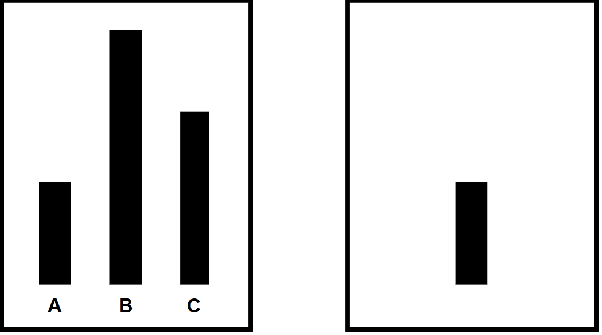Peer Pressure - An Experiment
How do obvious group mistakes affect an individual?
Peer Pressure - An Experiment
Peer Pressure - An Experiment
Everyone has felt the effects of peer pressure. It starts in school, where everyone wants to be part of the "cool" kids, and continues into the workplace, where those who think differently are often laughed at and ignored.
Humans are social creatures, no doubt about it. In ancient times, we couldn't survive alone in the wild. Our ancestors formed tribes, villages, and cities, which helped humanity survive and thrive over time. An individual couldn't have achieved this alone.
Now, we've entered the digital age. But if you look closely, you might call it the age of advertising and media consumption. Everyone has a smartphone because it's hard to imagine why you wouldn't, right? Social media is still a big deal, and if you're not up-to-date with everything happening worldwide, you're seen as uninformed. We push each other to keep up constantly, and as if life wasn't hectic enough, we dive even deeper. This leads to mental health issues like burnout or depression.
But are we doomed to always go with the flow? Do we always have to bow to the group's opinion, even if it's not ours? Not at all. However, it's tough to stand against the so-called mainstream because everyone needs affection, praise, and acceptance from others. This is one of our basic needs, and like a primal instinct, it drives us to want to belong to the group and not be an outsider.
Let's take a closer look at how much a group can influence us.
Asch's Experiment
In 1951, psychologist Solomon Asch published an experiment to test group conformity, which is how a person integrates into and adapts to a group. It aimed to show how strong the pressure of a group's opinion is on a person, even if they disagree and the group's opinion is clearly wrong!
Here's how the setup looked:
The test subject was brought into a room with other participants. They were told that everyone was taking part in the test. What they didn't know was that the other participants were part of the test and had pre-determined answers.

They were shown cards like this, and all participants had to say which line on the left card matched the length of the line on the right card. The difference is easily noticeable with the naked eye.
In the first few rounds, the insiders gave their true assessment along with the test subject to get comparison values for the "normal" group. With this setup, the subjects answered correctly 99% of the time.
In the subsequent test, each test subject was asked 18 times which line matched the reference line. The insiders randomly gave the wrong answer 12 times and the right answer 6 times, so the subject wouldn't get suspicious.
Results
The results were striking: 37% of all questions were answered incorrectly by the subjects. They bowed to the group's flawed opinion and ignored their own.
Looking at the number of influenced individuals, 75% of the subjects gave at least one wrong answer and were swayed by the group. Of these, 5% always followed the group, as if they had no opinion of their own.
The remaining 25% refused to follow the group's obviously wrong statements.
Conclusion
The results show that it's very hard for us to go against a group, even if we're fully convinced of our own opinion. The bigger the group giving the wrong answer, the harder it is for an individual to resist.
However, further tests showed that it's easier for the test subject to stand against the group if one or two others join the "minority" and also give a contradictory answer to the majority.
If you don't always want to bow to the group, hopefully, you can now recognize such situations and work on standing up for your own opinion against many others. This doesn't mean you should always be the troublemaker. But it can be wise to question any (wrong) decisions of the group present before something bad happens.
